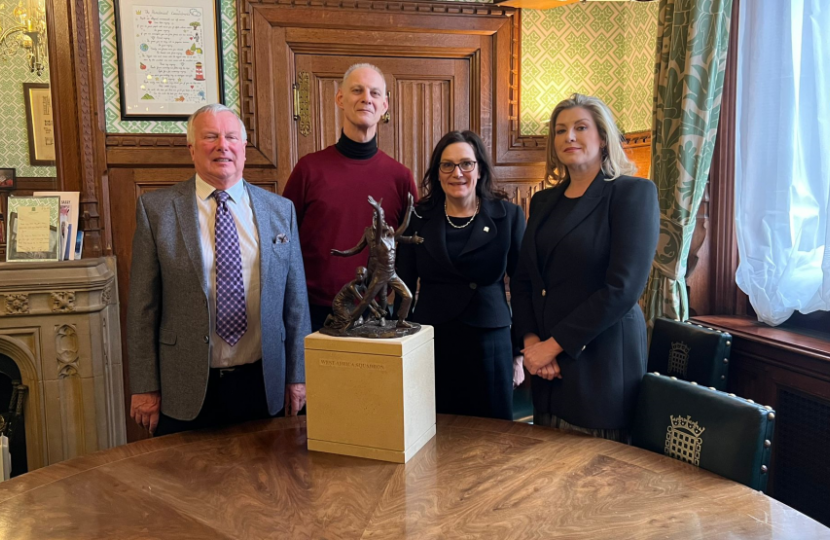
Rebecca Harris MP has backed a new campaign to honour the Royal Navy fleet which helped to bring about the end of slavery and freed 150,000 men, women and children.
The West Africa Squadron, operated between 1808 – 1867, policed the seas between West Africa and America, boarding vessels suspected of being involved in the trans-Atlantic slave trade and seizing vessels that were.
So seriously did the UK embrace the quest to end slavery, following the passage of William Wilberforce’s Slave Trade Abolition Bill in 1807, that at its’ peak the fleet 36 of Royal Navy ships, crewed by 4,000 men, consumed 50% of the entire Royal Navy’s budget, or two per cent of Great Britain’s entire GDP, equivalent to around £50 billion today.
Despite this proud record there is no memorial to the thousands of sailors who lost their lives, or the pivotal role played by the Royal Navy which waged the 60-year campaign to end the trans-Atlantic slave trade.
Speaking at the unveiling in Parliament of a model of the proposed statue, Rebecca Harris commented:
"We have a commitment today to remember our history to work to prevent slavery today. I am proud to support our mission to end modern slavery in Government today."
Under the Conservative Government in 2015, the Modern Slavery Act became law, reaffirming the Government's commitment to human rights and ending trafficking.
The campaign was started by a group of British historians, led by Colin Kemp, who was surprised that there was no memorial to the West Africa Squadron.
The model, by award winning sculpture, Vincent Gray was unveiled this week by the Leader of the House of Commons, the Rt Hon Penny Mordaunt MP. It features three figures, a shackled woman, symbolising slavery, a naval officer of the time, making a compassioned gesture and a final figure, a man with broken shackles, reaching upward, symbolising a freed slave.
